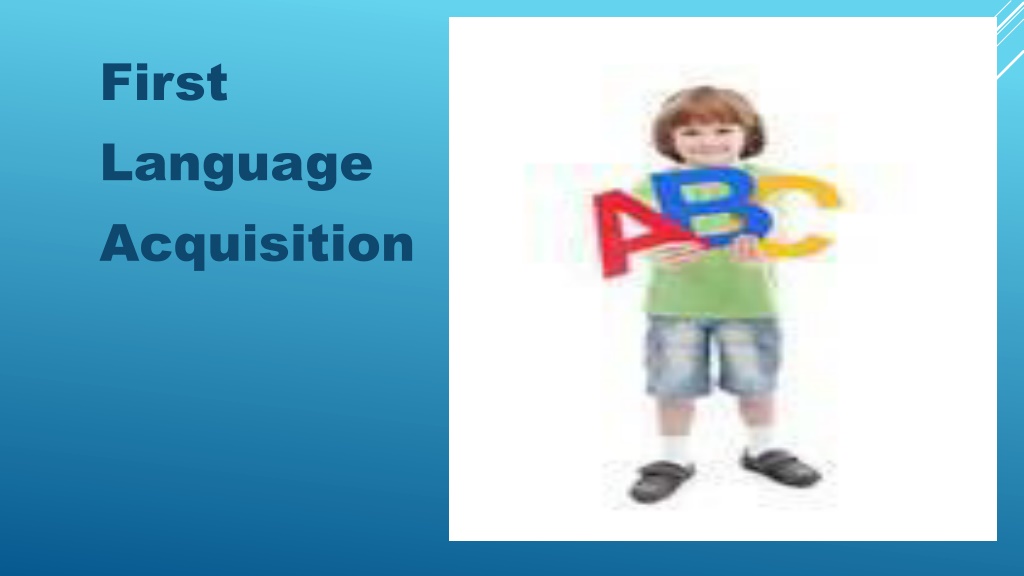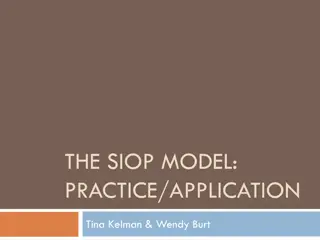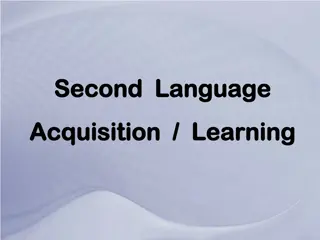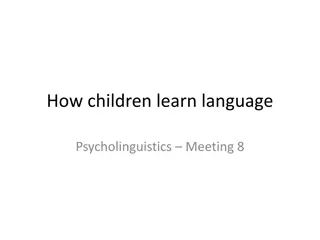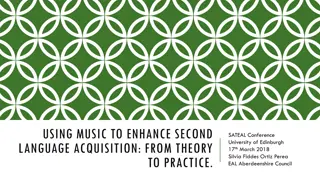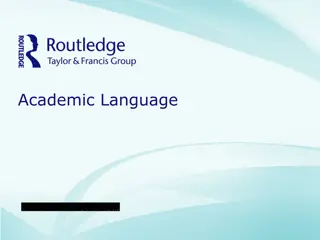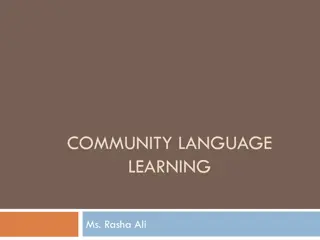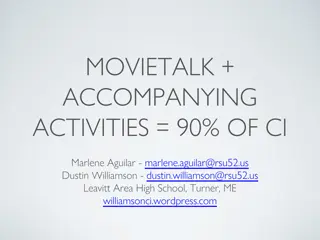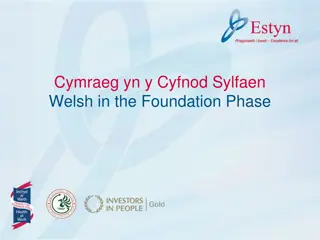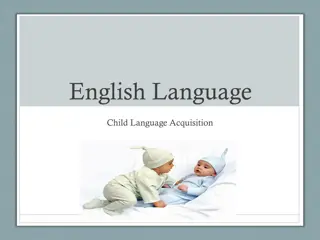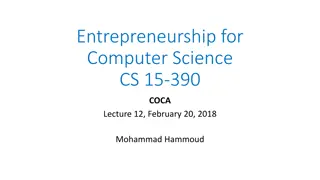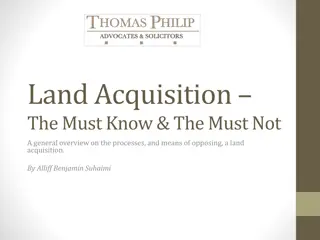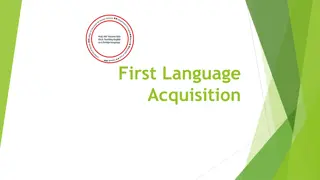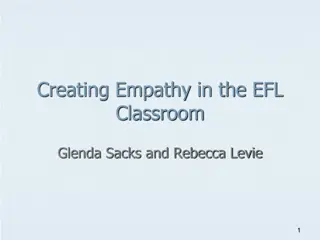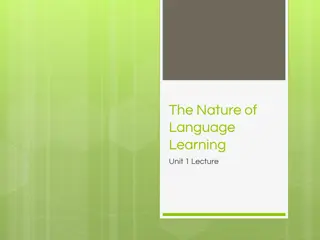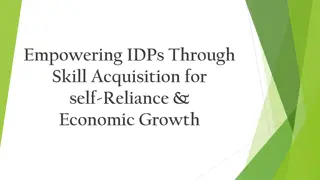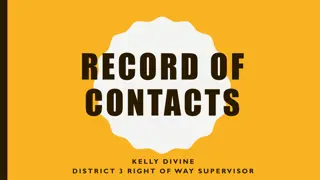Understanding First Language Acquisition Process
First language acquisition is the process through which humans develop the capacity to perceive, comprehend, and effectively use language to communicate. It primarily focuses on infants acquiring their native language. Basic requirements, caregiver speech features, and the acquisition schedule play significant roles in this developmental milestone. Caregiver speech, characterized by simplified style and specific features like frequent questions and exaggerated intonation, supports a child's language learning. The process involves interaction with other language users and relies on the child's physical ability to send and receive sound signals.
Download Presentation

Please find below an Image/Link to download the presentation.
The content on the website is provided AS IS for your information and personal use only. It may not be sold, licensed, or shared on other websites without obtaining consent from the author. Download presentation by click this link. If you encounter any issues during the download, it is possible that the publisher has removed the file from their server.
E N D
Presentation Transcript
First Language Acquisition
It is the process by which humans acquire the capacity to perceive and comprehend language, as well as to produce and use words and sentences to communicate.
Language acquisition usually refers to first- language acquisition, which studies infants' acquisition of their native language.
-Interaction with other language users ,
- The child must be physically capable of sending and receiving sound signals in a language .
- The child must be able to hear .
The acquisition schedule All normal children develop language at the same time . Language acquisition schedule has the same basis as the motor skills.
Caregiver speech A characteristically simplified speech style adopted by someone who spends a lot of time interacting with a young child.
Features -Frequent use of questions , exaggerated intonation , extra loudness , slower tempo with longer pauses ,
- A lot of forms associated with baby talk like nana , or repeated simple sound and syllables , as choo-choo, wawa , pee-pee .
- Simple sentence structure and a lot of repetition.
Cooing By four months , the developing ability to bring the back of the tongue into regular contact with the back of the palate allows the infant to create sound similar to the velar consonant [ k ] and [ g ].
Babbling By six and eight months , the infant begins to produce different vowels and consonants as well as combinations of sounds.
The late babbling stage is characterized by: - more complex syllable combinations ( ma-da- ga-ba), - a lot of sound play , - imitations .
The one word stage Between twelve and eighteen months , children begin to produce a variety of recognizable single-unit utterances.
The two-word stage Around eighteen to twenty , a variety of combinations , similar to baby chair , cat bed will usually have appeared.
The adult interpretation of such combinations is very much tied to the context of their occurrence .
Telegraphic speech Between two and two-and- a-half years old, the child begins producing a large number of utterances that could be classified as multiple-word speech , like : This shoe all wet
